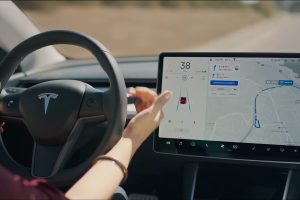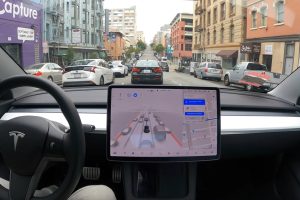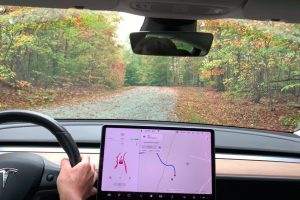- 🚘 Tesla has been aggressively promoting its Supervised Full Self-Driving (FSD) in North America recently.
- 🌍 Tesla CEO Elon Musk suggests that the launch of FSD in other left-hand-drive (LHD) regions is imminent.
- ⏳ Musk stated that Tesla believes version 12 of FSD is ready for supervised use in LHD countries, but right-hand-drive (RHD) regions will take longer.
- 🇪🇺 LHD countries include the U.S., Canada, most of Europe, and China, which is a key market for Tesla.
- 🧪 Tesla has been independently testing FSD in other countries for a few years, and regulatory frameworks are being discussed with the United Nations.
- 📈 Tesla’s FSD has surpassed 1.3 billion cumulative miles, and the company is offering free trials and test drives in North America.
In the ever-evolving landscape of autonomous driving technology, Tesla has been making waves with its Supervised Full Self-Driving (FSD) system. While the company has been aggressively promoting this cutting-edge feature in North America, a recent statement from CEO Elon Musk suggests that the global rollout of FSD is on the horizon, with left-hand-drive (LHD) countries being the next frontier.
The Imminent Launch in LHD Regions
During a recent update, Musk revealed that Tesla believes version 12 of its FSD software is ready for supervised use in LHD countries. This statement carries significant implications, as LHD regions encompass major markets such as the United States, Canada, most of Europe, and the ever-crucial Chinese market.
The prospect of expanding FSD’s availability to these regions represents a significant milestone in Tesla’s pursuit of autonomous driving supremacy. By introducing FSD to LHD countries, the company can further refine and enhance the system’s capabilities, gathering invaluable real-world data and feedback from a diverse range of driving environments.
Navigating Regulatory Frameworks
While the technological readiness of FSD for LHD regions is a promising development, Tesla must also navigate the complex landscape of regulatory frameworks to ensure a seamless and compliant rollout. Musk acknowledged that the introduction of FSD in right-hand-drive (RHD) countries might take longer, indicating potential challenges in adapting the system to different driving norms and regulations.
To address these challenges, Tesla has been collaborating with the United Nations Economic Commission (UNECE) to establish regulatory guidelines for semi-autonomous driving technology. By actively engaging with international bodies, Tesla aims to ensure that its FSD system meets the highest standards of safety and compliance, paving the way for a smooth global expansion.
Pushing the Boundaries of Autonomous Driving
Tesla’s aggressive promotion of FSD in North America has already yielded promising results. The system has surpassed an impressive 1.3 billion cumulative miles, a testament to the company’s commitment to real-world testing and data collection. Additionally, Tesla has been offering free trials and mandatory test drives of FSD to new buyers, providing valuable feedback and insights that can further refine the technology.
By continuously pushing the boundaries of autonomous driving, Tesla is not only enhancing the capabilities of its FSD system but also driving the broader adoption and acceptance of self-driving vehicles. As more drivers experience the convenience and safety benefits of FSD, the demand for such technology is likely to soar, propelling the industry forward.
The Road Ahead: Balancing Innovation and Responsibility
As Tesla steers its FSD system toward global expansion, the company must strike a delicate balance between innovation and responsibility. While the pursuit of cutting-edge technology is commendable, ensuring the safety and reliability of autonomous driving systems should remain the top priority.
By collaborating closely with regulatory bodies, conducting rigorous testing, and prioritizing transparency, Tesla can navigate this challenge effectively. Continuous improvement and adaptation will be crucial as FSD encounters diverse driving conditions and cultural norms across different regions.





